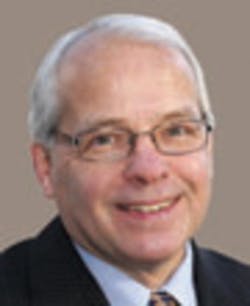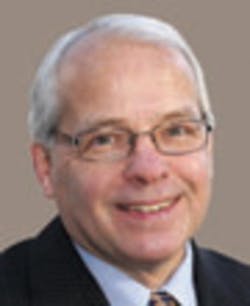Electronic measurement and control technologies are pervasive in a widening range of applications, from agriculture to 5G communications. NIWeek provided an opportunity for companies to tout their successes in deploying measurement and control systems in a variety of industries. Presenters described agricultural, automotive, aircraft, health, energy, weather-forecasting, and 5G communications applications.
Automotive and semiconductor test applications presented at NIWeek are highlighted elsewhere in this issue.
Addressing aircraft manufacturing, Bernard Duprieu, head of manufacturing technology research at Airbus, and Sébastien Boria, R&D mechatronics technology leader at Airbus, related their vision of the smart factory, incorporating smart tools, intelligent communications, industrial robots, and mobile manipulators.
Tony Tenison, senior product manager, and Megan Krause, controls and instrumentation engineer, both at Jacobs, noted that many of their projects involve expensive facility operations, and because retest can be difficult or impossible, all data is critical. Key issues for them are shortened development times, increased testing reliability, and multichassis synchronization. They reported on a system called Test SLATE used to test fixed-wing aircraft.
Addressing health issues was John Lloyd, research director at BRAINS. He described a helmet-drop test system in which a helmet is released from a specified height and its response measured on impact with a rigid base. The company has developed a helmet design that reduces rotational forces by 50%.
Dr. Danson Michael Joseph, power systems engineer for National Grid UK, and Peter Haigh, power systems engineer for National Grid UK, elaborated on the challenges presented to them by embedded generation. Meeting these challenges requires access to data, flexibility, and grid-measurement capability—in turn requiring sensors and, within a secure network, monitoring systems and IT infrastructure.
Also addressing energy topics was Dr. Curtiss Fox, director of operations of the Duke Energy EGRID at Clemson University. He discussed a 15-MW wind-turbine test facility that deploys 1,000+ sensors in a drivetrain mechanical test rig.
Robin Pritz, a field test engineer at CNH International, outlined operation of a data-acquisition system deployed on a combine harvester. The system delivers custom data views of machine health worldwide, connecting sensors and system nodes with local, remote, and cloud edge IT plus corporate IT.
Dr. Takuo Kachiwa, department general manager at Furuno Electric, described a weather-radar system able to provide an advance warning to the onset of severe “gorilla thunderstorms.” His team designed two compact X-band Doppler weather radar systems, one of which weighs only 28 kg while offering a 30-km range and operating on less than 300 W of power.
5G was the topic of a presentation by Dr. Amitava Ghosh, head of North American Radio Systems Research at Nokia. He recounted research areas including cell densification, chip-scale antenna design, MIMO and beam-forming, interference management, and new spectrum and air-interface technologies. The goals are to achieve better than 100-MB/s edge data rates with better than 10-GB/s peak performance with less than 1-ms latency.
Many of the systems described at NIWeek make use of or help enable the Internet of Things. Jim Robinson, a GM at Intel, said the global economic impact of IoT and big data will reach an estimated $2.7 trillion to $6.2 trillion in 2025. There is plenty of opportunity for those willing and able to leverage pervasive and inexpensive connectivity, low-cost computing, and big-data analytics.
Rick Nelson
Executive Editor
Visit my blog: bit/ly/N8rmKm

